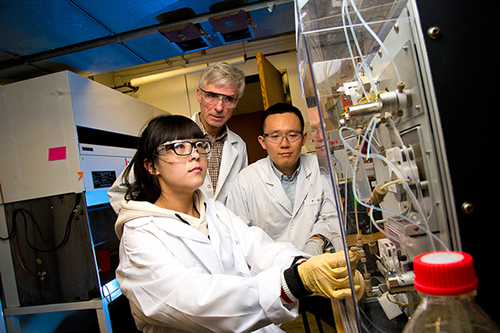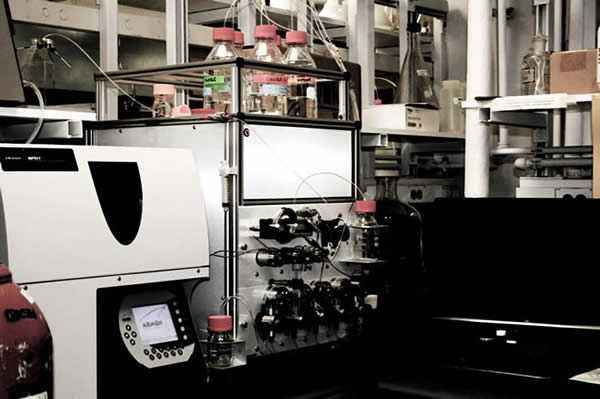Bioseparations
Bioseparations use scientific principles and engineering fundamentals to purify biological products on a large-scale. Purification enriches biological molecules, cells and parts of cells into purified fractions, which are the end products of bioprocessing. While these products may have a high value: diagnostic biomarkers from biological materials, therapeutic proteins from microbial fermentation or cell culture, bio-active peptides from plant and animal tissues, the growing importance of industrial biotechnology is placing new demands on bioseparations technology that is not only capable of high purity, but enables low cost. Examples include extracellular products froim microbial fermentation and chemical building blocks from biomass. The goal of LORRE’s bioseparations research is to systematically relate properties of broad classes of molecules to their retention on surfaces or in extractants, and to use this knowledge to develop and model processes for recovery of purified, biologically-derived products.

(Purdue University photo/Steven Yang)
Research
Retention properties of biomolecules are controlled by the surface chemistry of interactions between specific regions of the molecules and the separations media. The media form ionic, Van der Walls, hydrogen or coordinate bonds and retain biological species on the basis of size, charge, conformation, hydrophobic character or biospecific binding to receptors. Bioseparations Engineering is the toolbox that helps researchers identify materials that selectively bind a target molecule so that it is enriched, i.e., purified.
Case studies around which research projects are developed include use of polymeric or starch- based adsorbents to remove inhibitors from fermentation media or water from ethanol , and chromatography of bioactive peptides, proteins, and cellular components. Another case study addresses rapid concentration and recovery of cells (CCR ) using membrane systems. This is best used in bionanotechnology where biosensors require cells to be concentrated for effective interrogation of nanoliter sample volumes. Rapid cell concentration and recovery is a first step in the detection of pathogens and toxins that cause illness when consumed in food, water, or air.
Other bioseparations research addresses mechanisms of transport of molecules, nanoparticles, or cellular entities between flowing fluids and surfaces as well as the chemistry and nanostructure of adsorbents, chromatographic stationary phases or membranes that define these surfaces.

At the nanoscale, composite surfaces for microfluidic devices or for chromatographic media determine the retention properties of samples processed across these surfaces. Systems for purification of proteins, peptides, or extracellular fermentation products for manufacturing purposes are subject to the same scientific fundamentals, but at characteristic dimensions measured in millimeters to meters.
A fundamental understanding of mass transfer phenomena and application of a quantitative mathematical formalism enables construction of models that relate mechanisms of molecule/media interactions to selective retention of one species over another, whatever the scale. Our research integrates new chemistries, modern biology, and advances in analytical instrumentation in order to improve bioseparations processes. New knowledge is packaged into new materials and integrated into equipment configurations in order to rapidly prototype new types of separations.
LORRE’s programs strive to educate graduate students in the skills required to carry out bioseparations research. The researchers utilize this knowledge to address biomolecular fractionation at the nanoscale as well as the process scale. The students learn through discovery on how to apply molecular and microfludic sciences, and mathematical models, to achieve accurate prediction of macrofluidic behavior in separations systems.

